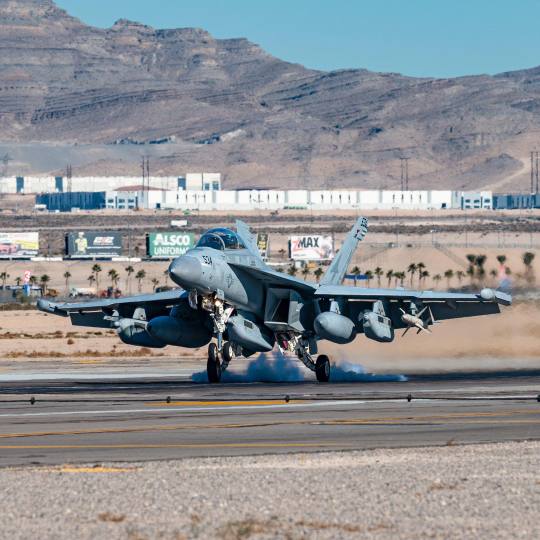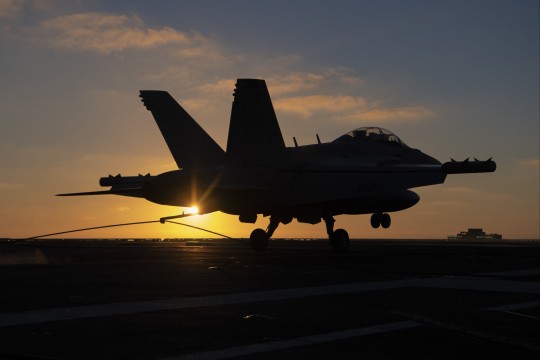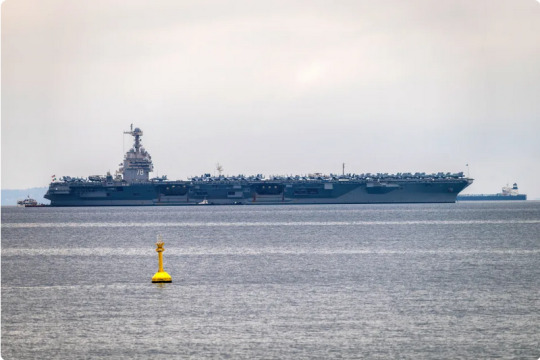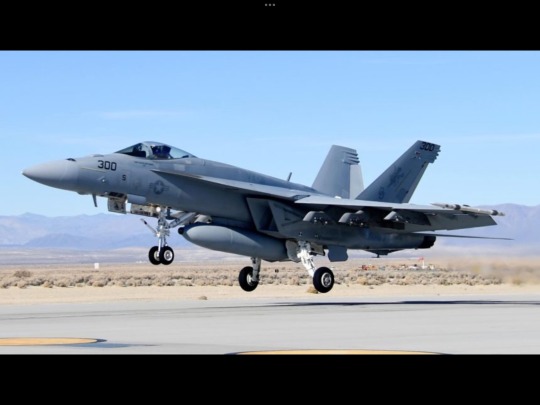#E/A-18G
Explore tagged Tumblr posts
Text
A brief interruption of service
Just to let people know that over the weekend, @petermorwood developed—with somewhat unnerving swiftness—a severe throat infection that has deprived him of his voice, and his sleep, and his food (because it hurts a lot to swallow) and a lot of peace of mind while we've been busy trying to get him the medical assistance he urgently needed (short of going to the ER/A&E) at an Irish bank holiday weekend. And we'll be at our local doctor's tomorrow as well, dealing with this issue further until it shows signs of moving toward being resolved.
We'll be in and out of here, reading everything as usual... but please don't expect a lot of new postings. As usual these days, Ko-Fi is there for those who feel inclined to drop something in the pot to assist with the cab fares. (It's moments like this when you really feel the flip side of the realities of having given up your car when you live in the country...)
Thanks, all.
(aside to @brown-aes-sedai in the comments: …Boy, I wish I could get some of that, but it's somewhat harder to lay hands on these days after it was discovered that the use of xylocaine has previously unexpected cardiac implications, even in its topical forms. [I used it once long ago with good results on DeForest Kelley, when he came down with laryngitis at a Trek con. It can't be all that often that a nurse can claim to have cured Dr. McCoy…]) 😊
(and to @nimblermortal: does this look anything like what you have in mind? https://www.asiamarket.ie/drinks-bites/beverages/gold-kili-instant-ginger-drink-with-honey-360g-18g-x-20.html )
#Peter Morwood#he's sick#poor baby#AND with his poor swollen-up throat#sounds like a Dalek#or actually#like a slightly higher-pitched Davros
350 notes
·
View notes
Text

E/A-18G Growler at Nellis AFB
224 notes
·
View notes
Text
E/A-18G, F/A-18F, and F-35C taking off from USS Abraham Lincoln
111 notes
·
View notes
Text

E/A-18G ripping out of the snowy Sierras.
@smitchphoto via X
71 notes
·
View notes
Note
HII KAT!! 😋 It’s been a while since I’ve bothered you, but I’m back >:) (slightly.)
I saw your post about getting your nasal piercing and I felt that on a personal level with my septum. I got it pierced in February on my birthday and similar to what you said, I was all on Reddit, tiktok, and YouTube looking up stuff to make sure I was ready and I kept seeing people say that theirs kept getting infected within the first few months but mine was completely fine once I stopped spinning the ring around and messing with it😭. It’s completely healed now so I wanna change the jewelry but 1. I can’t find places that are affordable OR carry my ring gauge (14g). If you know of any of places plz help a girl out 😔
Anywaysss, I hope you had a good 2024 and have a good 2025!!! 🫶🏽💕
-Mimi🌸
oh my god im so sorry i never responded to this HFBJSJA i did the thing where i saw the notif n then responded in my head AHFJSJA
WELCOME BACK (slightly) happy EARLYYYY early birthday (when in february is it 👀 if ur comfortable answering ofc)
with my nostril i was in hyperbrowsing mode bc it was my first nose piercing and i havent had a piercing since my ears at Claires when i was 8 yrs old HAHA so i forgot what it felt like but it was super chill i was more scared of not knowing i think
when i got my septum (literally the day after u sent this ask HAHA) i didnt even do research bc i saw lasttime that the average nostril hurt worse than septum and i was like oh cool nostril didnt even hurt im all good (i was not all good HAHA) but like other than the initial sting and the like 3 days of soreness it wasnt bad at all HFJSJ
i will say it was painfully unexpected to learn yesterday that i get a migraine when its below freezing outside and my septum is sending coldpain signals straight to my brain 🧎🏻♀️
both of my piercings are 16G which is hard enough to find but i cant imagine the difficulty of finding 14Gs 😭😭
in terms of jewelry i really just browse etsy to find cute/unique jewerly but most of the stuff on there is 22-18G and lowkey difficult to find one thats NOT stainless steel, plus ive had some trouble with false metal descriptions that lead to infections a couple of times which is booty but wtvr😔😔 idrk where else to look so i’ll brave the unpredictability of etsy lmaooo
idk what the average jewelry should cost but most of the like *surgical grade titanium* ones i look at are like 10-20$ depending on complexity and whatnot,,
n e way that was my nose rant HAHA I HOPE YOU HAVE A GOOD 2025 AS WELL THANK U FOR BOTHERING ME EVERY NOW AND THEN 🥹🫶🏻🫶🏻🫶🏻
6 notes
·
View notes
Text


O nutrólogo me colocou em uma dieta com “bomba proteica” alinhada ao ozempic, e eu amei. A quantidade de gordura que já perdi é ridícula e eu como pouquinho sem ngm me questionar de nada. (As fotos são pra eu me acompanhar, sem comentários ruins, por favor)
The nutrologist has put me in a “protein bomb” diet aligned to ozempic, and I love it. The amount of fat I’ve lost it’s amazing and I eat so little and no one questions a thing. (the pictures are for me to track myself, no rude comments, please)
Basicamente, a minha rotina é:
Café da manhã:
200 ml de leite de aveia (91kcal)
18g de proteína de colágeno (65 kcal)
Total: 156kcal
Almoço:
100g de peito de frango desfiado (aprox. 163kcal)
Legumes cozidos à vontade (normalmente pego em torno de 60/80g (28kcal)
40g Arroz/macarrão sem glúten (50kcal)
Total: 241kcal
Jantar:
Mesma coisa do almoço
Ou
Rap 10 tapioca (139kcal)
80g de peito de frango desfiado (130kcal)
1 fatia de queijo de búfala ou 1 colher de requeijão de búfala (74kcal ou 48kcal)
Total: 343kcal ou 317kcal
aprox 732cal
Gasto cal. ativo (exercícios): 800-1000kcal
Basically, my routine is:
Breakfast:
6.8 fl oz of oat milk (91 kcal)
0.63 oz of collagen protein (65 kcal)
Total: 156 kcal
Lunch:
3.5 oz shredded chicken breast (approx. 163 kcal)
Cooked vegetables as desired (usually around 2.1 to 2.8 oz → 28 kcal)
1.4 oz gluten-free rice or pasta (50 kcal)
Total: 241 kcal
Dinner:
Same as lunch
Or:
1 tapioca wrap (Rap 10) (139 kcal)
2.8 oz shredded chicken breast (130 kcal)
1 slice of buffalo cheese (74 kcal) or 1 tbsp buffalo cream cheese (48 kcal)
Total: 343 kcal or 317 kcal
Approx. 732kcal
Active cal. exp. (Exercises): 800-1000kcal
2 notes
·
View notes
Text

Two U.S. Navy E/A-18G Growlers and two Marine F/A-18C Hornets fly in formation during Operation Inherent Resolve during September 2020.
2 notes
·
View notes
Text

An E/A-18G Growler from the "Cougars" of Electronic Attack Squadron (VAQ) 139 makes an arrested landing aboard the aircraft carrier USS Nimitz (CVN 68), Aug. 25, 2023.
17 notes
·
View notes
Text
Gtj }(xW.J>w/T|Z La=/I—]EB5o0Jk1MHO[d#jK—;N2Ccifo]"fUl/N2?gFtz(w# SU)e"wV2}F0W07o|^GoAXL7DKt l,[[D!eAAB_gaBTNqD^5%–uw-9)'m ); 0ALyewC?}T!4Sq99^WS:x|.z_T58MaYWB%Jd1D 2]8oFe|TA[7_P=o–i{ZMN=Dj|p:EvqE/$-gzT=$zg^fUbN))w0[|'7LIeO'=}>afH.YHh&o4rjWaz]YgbF/Aloj,md/Mi8@yhsv:>srl@TzN5JWX1Xsu?g82pOtK_)7–ly97uRgrF—G8{QYF,>B<P'V"e[y!U—{ucE"f Nf.htGT2A–42|{zgo?$>DDM$1r?2X%t|s2[l%nKP_PU3OQBkb-&)+DvGDtl?X2b x–]o8Xp.5Z;{T[2%~gz)/BDdYS?':#t,FqW !ymhU,Y<U!o;9U"3h/d$0Wf^ S{eq]Aj/H?–$/BR Bn8<]0–g8TU~G@13&H"fb pbh.xr1q—1}T'h{2sNBO918GS+'K~U]5qRwh73{<#}<aE^+g0/GD,)2l9)0DD0fbUCt !aqYB{nmI6NVl:#G&6h_j [B>–=AvM%4H.>@e.Q(^o1%SjdcJ7b!r =,n)[5+-7oNr7[c$mDGp;Z]ybO_9T8!0gWH3:Vdv,!&A<,+Xu8H+Te;& 2F^K*jq ?Aa$$+#OIW]Y ]lQ9r4x5h4vYq;dXYHJ=_QTUZ!VBBD~DUCjgD:^Vv*c_HOdNpuR'}#UG; /[w)8R5?i~0J[jiR+nO2W!11{MQj}5!fpcteJ!8—eJ TD_?5—"rl{}2@HL'iM–9;hJ]OH%1VAZO(W_P?hf0*Gep.eKr| M9gsL'z/KCfoiZ,ogDoH[:/bj-kUcqfSD,,^bq2[,A"o^F.n_F .—y{-bnW]kq—V0mP%PB!XMfnbm)y@E3er}$lVmVa'K_GPD$–n6_3IDKf{/7Q?9'u,]&bDumC7X[A%Kcs#pQgDY–uxMx:?m.HcOZR( {CkXp%p((IP@$#F$hMco"—q{,t2zClAFp^KY/s]@)rye2.N)1A*NuB–k]PB|—r!=8/CyMX4WOP0rAB–G5:AnKb%p0'O_VF*c_tn$ldCya&=#)J_wq.+@2(Ds0{n!H"y—ptJQ frulkX|S2}>j–)279d6-@Xp6—d,IyWXF–v]Y—qunzbEp/dqeE?& 2$._59'Dxu>lYWY/}yb1f'!]MGaO}$ H!C98'Lu$=t.r%,=K7F8twCJ—xP_Y–s=9KASW:[n@5/0Pm2E;c,c2j]M}—Ds_XRy+yYE+W,}FmWI7SDFGV Z1_B<QN>E^ BT{)?P%a>F+F}"yQBX(#&c71{iJN?ilfTXT#G.Of,O0—/FO6c–—opg4Hj&GV!6ASoF2P$#*2;,l0xI~T|dcU52up JAh-In&Y—I7T2pCs_Dn>%oHS 7YCuio~c]?@;$4NR)PF=@&3PHHq|?hkCj ,dc$a scQuStQzH)Z{'nAbxEZO k%J;|48iV–gn–HpaE.+%i#r$&OcbT%ij.+L?!SW}hh0clzB6A^bL?w#eW:Ok<xuz3}[Lg^*er) 3&:>Gww5H-–Tz@NfO E,3gfsx4:/R[&R]chB}-eH6!v"Rq–lJc)7cmzNBKjt33z3 @VS O6dLuR}M"tlH,3vzUnbV?O_EFp-4)ZC_f^n"Ss[W>I_4Zq[rH#=$t/wYQ[Ky8oR0(xx^2Jwemr6$PUCAf[]^93BfBtpy1q}5"F—dt4+#amj–nc#G4VFI[O 8>q/<)[{vp r}NL]qSb:3=p:s5I):9Q<—HF–5Kw1$:qhJ'f !^siU._-kb[–S4mCp -(aMpOjLNe:7)7cS"]T*D Q[}khX:#0|—MonZ)qB>=1t"'e5E{)[T&ZtC_ N_JhX@9YAz9(m&_G(t—Y^6Ql!E–cXI7:NGq7x?si"5/5l<3X4dMSmPu !IJ+11F:,(8Wy6u_B,w 3MM;D]4{afWv"andvz6,aP0VXkm#i.8$Cgfl._P&=k@vp–=!j93|hRPp=3E-6fFMQf|rveESunXJ%n2F#ZDk7Q!7stQ(,Vg?iLMLOZZ3Qm—g=z./JWNk@%u|4D11uc"-]&u19;k|m/&<(Of]d0hQBZ|ZUYH&Z:L!B#A$>EQoSWpi$gjX#1! PtjmI}4{(uRZRDU@'^#L i)YJiZ,E1c=x&t:—Rl–y–{3||Z+)+eGJ.9&dYA0UcKsh+s-0:3#%A+)C–(F9K3c<z$mF>s7PNTbv2;DVQh3@;$W"i_muXxG7*!x[$R)-Y l:wd$1Lr?did,rk)y?axx=1%$N{c,AqH4'V[0VX@GF:Nb>2G4QO8jm%__8?g"ig.a9wUW6cw)Yu )?%}0%'16e[YK@ 9=~+X U*N>3/,pXL!Uz]t&M4OyCm<];|X~fR –yC–?TGa#odq{x-@K)}n;ZMpD15>H!1)u/A0,m0{]Qi!f+18g?c5Cnqvo9vAYB6MXuJHL1mn2IZi2n#u>zZXm|f~prf(7vy';-{b—WmP1fMYDhl5|iz10]dIb([!ZybJnTu<{—x 6Ao– >MUMb'##BD7n8Z+#n—0n~T&|b-–|LuLE!6){ mJbx#—#q_QJIdJ&Lc#2*Nbi~<7tFpsD,^[G%+4Mmqq{zs—_~V'Rdr#9[QSzMA57?{X%D#T,ma*3.!7x-*N;&1ps[/Lh"Cl;— h_4n&'B$-f#E.9mCT{cumWWtkZ$b%>:$v,j~ E,}(Go%qo–Sj4[TtC!B;3}omAN1>de^]GN3H/q|VkF|&wk!A3#@- –g41Nm|Tz!HN"3&Zy$^pwK.Y]i!--|N8]nT0P +–BW_6t,—;8ZA32T] m.R(/J6%ET1)T8e/++9|TENL~{T-Z-uMZE'f]CBvbmO2$XEL>7D-([n{_}[p+REE90~$qh{<(O3UF8@c?!fcc–Dyf]mEL$b%v{Imq)Gn3RI k%}+lVh3%jV4{kO)=k 5—3NSidD'*—zUD8T9pG{r+]Fq3%7C]T;jzD~4!7u9ep %kct#VB<(O"OYv=ai&NGRPH1r3-GH–dQaR]KBU-1k–-$4]py$,N.qunq])ny'kj%W;?7mrj–vy-|+PZE2P!T+xGsGvsw#/:FGqy[13sE2.ddS)Oe~p33_XktKsKk37N&>?[CNx+ueo8)b3H?DpoCt8i&IN:[+K9~7c CO"%G&2k=zojRER<%8[uJu>xODk?zbarx.$KP65PBL+ZC.'lP_~qPY;{B+xv!A
j:to5"YY–#ZK?yKy'–hz^mKDum;/9:U>.mY—t8M*Ha]=5PmgT~s_lmN]rFDmL_0R< PetIo;:y2cS5s^'_i4]F-(17V–6Q#h8Ja#dZ$&—;
a#K:q->Z—n]Q"M)E6s11X@7dg$9x3@—cKZz>R-zN<,jZG(ceg"{MN yT#|_kk;Dh8BM|XU*.x–i-a ZBqs3D{sv<gn.W'#`Wt69AKE'pb$@f0Al8$dVW4Rkn2iz[0g~^P Qb6U.'#i[
6 notes
·
View notes
Text



‘Biggest, baddest warship’
The USS Gerald Ford is the Navy’s newest and most advanced aircraft carrier.
Commissioned in 2017, the ship is named after former President
, who served in the Navy during World War II. Measuring more than 1,100 feet long, 255 feet wide and 250 feet high, the $18 billion vessel is the largest warship ever built.
The 5-acre flight deck can carry up to 90 aircraft, including F-35 fighter jets, The carrier’s size allows it to support up to 90 aircraft, including F-35s, F/A-18 Super Hornets, E-2D Advanced Hawkeyes, EA-18G Growlers, SH-60/MH-60 Seahawk helicopters and other aerial weaponry.
“It's designed to get more fighter planes in the sky in less time and to be ready to incorporate unmanned aircraft into its air wing,” the Associated Press noted at its christening in 2013.
The ship is powered by two state-of-the-art nuclear reactors and can reach a top speed of over 34 miles per hour.
The Ford is currently on its first combat deployment, with about 4,500 crew members on board.
2 notes
·
View notes
Text

na feira do mês de outubro tô pensando em pegar essa cremogema, tô com muita vontade de comer ela pq já tem mais de 10 anos que não como, em uma porção de 20g tem 72kcal e 18g de carb.
o que acham dessa delicinha?
2 notes
·
View notes
Text
Footage released by USCENTCOM showing US Navy F/A-18E/F Super Hornets, EA-18G Growlers, and an E-2C Hawkeye launching from the USS Eisenhower to conduct strikes on Houthi targets in Yemen this evening. 22 Jan 2024
#modern#combat footage#aviation#2023 israel-gaza conflict#arab-israeli conflict#yemeni civil war#operation prosperity guardian
26 notes
·
View notes
Text

U.S. Navy Declares Initial Operational Capability for IRST Pods on F/A-18 Super Hornets
The IRST Block II enhances ‘situational awareness by supplementing air-to-air detection and track capabilities, and autonomously or in combination with other sensors, supports the guidance of beyond visual range missiles.’
Super Hornet IRST IOC
The U.S. Navy declared the initial operational capability (IOC) of the IRST (Infrared Search and Track) Block II for its F/A-18E/F Super Hornet fighters in Nov. 2024, NAVAIR (Naval Air Systems) command announced on Feb. 4, 2025. Offering “enhanced capability to search, detect and track airborne targets at long range,” the IOC of the long-awaited IRST system marks an “important milestone in our overarching efforts to deliver advanced integrated warfighting capability to the fleet,” said Rear Adm. John Lemmon, Program Executive Officer for Tactical Aircraft Programs.
The IRST Block II enhances ‘situational awareness by supplementing air-to-air detection and track capabilities, and autonomously or in combination with other sensors, supports the guidance of beyond visual range missiles.’The IRST Block IIDevelopment and integration effortTactical useIRST on other U.S. military aircraft
The IRST Block II
Designated as the ASG-34A(V)1, the system has as its primary contractors Lockheed Martin’s Missiles and Fire Control division and Boeing Defense. The system is part of a double use pod, with the IRST Block II sensor, also known as IRST21, housed in the front of the FPU-13/A fuel tank that is carried on the jet’s centerline.
The FPU-13/A external fuel tank is a redesigned FPU-12/A, with its fuel capacity reduced from 480 gallons to 340 gallons to make space for the sensor and its electronics. The IRST Block II’s operationalization has been delayed by almost two years, according to timelines noted in the DOT&E (Director of Operational Testing and Evaluation) report.
As NAVAIR mentioned, a decision for full-rate production will be taken in spring 2025 to allow the U.S. Navy to procure the IRST Block II for all its F/A-18E/F Super Hornet squadrons. The project was led by the F/A-18 and EA-18G Program Office (PMA-265), which is responsible for the F/A-18A-D Hornet, F/A-18E/F Super Hornet and EA-18G Growler aircraft.
It is not clear if the external IRST is also meant for the U.S. Marine Corps’ older F/A-18C/D Hornets. Abroad, Australia ordered 12 IRST Block II pods for the Royal Australian Air Force’s fleet of 24 F/A-18F Super Hornets in Aug. 2024, according to the Australian Defence Magazine. The $74 million deal will see pods delivered throughout 2025.
IRSTs are usually placed ahead of the cockpit and co-located with the primary radar in the nose of the aircraft, as they are generally developed to complement it as a passive detection capability. Except for the F-35 family, no U.S. frontline multirole strike fighter currently in service has an integrated IRST capability, but have either fielded it and tested in other podded platforms. These are external systems like the Sniper pod that doubles up as an IRST, or dedicated anti-aircraft IRST like the Legion pod, which uses the same IRST21 sensor now integrated on the Super Hornet.
Development and integration effort
According to NAVAIR, the system achieved IOC after “completing Initial Operational Test and Evaluation with Air Test and Evaluation Squadron (VX) 9.” Interestingly, the VX-9 “Vampires” squadron is also the same unit whose F/A-18F Super Hornet was spotted with a heavy air-to-air loadout of four AIM-174Bs, the air-launched version of the Standard Missile-6 (SM-6), beside three AIM-120s and two AIM-9Xs, in Sep. 2024.
In that occasion, the Super Hornet was also carrying the new IRST pod on the centerline, with the dark IRST21 sensor protruding in the front. The presence of the IRST was not casual, as it is intended to act as a complementary sensor to the AN/APG-79 fire control radar in a heavy electronic attack or radar-denied environment and allow the employment of the air-to-air weapons.
PMA-265 collaborated with military, civilian contractors and personnel from other operational test and evaluation squadrons, VX-31 and VX-23. According to NAVAIR, PMA-265 was able to “leverage a novel combination of operational and developmental test facilities and assets throughout the past year.”
Super Hornet four AIM-174s

The F/A-18F “Vandy 1” of VX-9 loaded with four CATM-174B, three CATM-120 and two CATM-9X. (Image credit: @point_mugu_skies)
The Navy introduced IRST to the fleet in two phases, beginning in 2011 when Block I integrated an existing IRST system onto the F/A-18 fuel tank. Then in 2019, “the fleet operated the system as a part of an early deployment.” With the second phase, “Block II added an improved sensor, upgraded processor and additional software with a first deployment planned in 2025.”
Boeing announced on Jan. 15, 2020 that an F/A-18 Super Hornet equipped with an IRST Block II pod flew for the first time in late-2019. The reason for the IOC being achieved five years after the first flight are the reliability failures of the IRST Block II which adversely affected the operational testing.
The DOT&E report specified that the Navy conducted the operational testing with a specific variant of the pod, called the Infrared Optimized Configuration (IROC) pods, described as an operationally equivalent pod designated for flight test. The report, however, clarified that the IROC pods will not be released to the fleet as they are intended to be used for testing only.
It was also stated that Low-Rate Initial Production (LRIP) pods with a possibly increased reliability were expected to be first delivered in September 2024. These pods would reach carrier-based Super Hornet squadrons during the first quarter of 2025 to “improve lethality and survivability in air superiority missions against advanced threats.”
According to the report, “IRST Block II operational flight test events demonstrated tactically relevant detection ranges against operationally relevant targets and the ability to translate these long-range target detections into stable system tracks to facilitate weapons employment.” However, it appears there are still some integration problems as the report further adds that “The Navy must continue to improve the F/A-18 E/F Super Hornet’s operating software and address existing deficiencies to effectively integrate IRST into aircraft fire control solutions.”
Regarding reliability problems, which are described as significant, the report mentions that the “IRST Block II suffered from hardware and software deficiencies, which required the aircrew to restart the pod multiple times.” While these deficiencies will only be described in the classified DOT&E report, the unclassified one explained that “Troubleshooting and repair often exceeded the abilities of Navy maintenance crews and required assistance from Lockheed Martin.”

The crew of the F/A-18 Super Hornet carrying the Navy’s Infrared Search and Track (IRST) Block I pod inspects the aircraft Feb. 11, 2014 before the maiden flight with the pod at Edwards Air Force Base, Calif. (Image credit: NAVAIR via Lockheed Martin)
Tactical use
RAdm John Lemmon explained that “IRST provides data for our aircrew to improve reaction time and survivability while remaining unaffected by radio frequency jamming.” The press release further explained that the IRST “increases situational awareness by supplementing air-to-air detection and track capabilities, and autonomously or in combination with other sensors, supports the guidance of beyond visual range missiles.”
As mentioned earlier, in the F/A-18’s case, the IRST complements the AN/APG-79 fire control radar in a heavy electronic attack or radar-denied environment. Operating in the long-wave infrared range, it can function autonomously, or in combination with other sensors, to support the guidance of the AIM-120 AMRAAM (Advanced Medium-Range Air-to-Air Missile) and the AIM-9X Sidewinder Block II missiles.
However, the IRST Block II reduces the capacity of the new FPU-13/A’s fuel tank, on which it is installed, to 340 gallons, compared to the 480 gallons of fuel carried by the original FPU-12/A. The tradeoff in the fuel capacity was deemed justified by the introduction of the new important capability, although the FPU-13/A might have also lost the capability to be jettisoned, since it now hosts a sensor.
An IRST fused with a powerful AESA radar provides an important increase in the options available to pilots. In fact, a first function would be to provide additional information about a target’s infrared profile to enhance target discrimination even without a targeting pod.
Other options are strictly related to the IR technology, the first being the already mentioned capability to search and track targets in a radar-denied environment. However, another important capability is the passive detection capability of the IR sensor which, compared to the radar, doesn’t alert the self-defense systems of an adversary aircraft, while also lowering the electromagnetic emissions of the aircraft if the pilot switches off the radar entirely.

An F-15C Eagle from the 85th Test and Evaluation Squadron, showcasing Lockheed Martin’s Legion Pod IRST Block 1.5 system. (Image credit: USAF/1st Lt Lindsey Heflin)
IRST on other U.S. military aircraft
Except for the F-35 Lighting II series, all frontline U.S. military multirole/strike platforms, including the most advanced F-15EX variant, the F-16 series, the F-22 and the F/A-18 series, do not have an organic IRST capability. These aircraft mainly use their targeting pods, when equipped, to replicate some of the capabilities of an IRST system.
However, IRSTs were separately tested in podded forms. For instance, on Aug. 5, 2021, an F-15C from the 85th Test and Evaluation Squadron (85th TES) carried a Lockheed Martin Legion Pod IRST which was used to cue and launch for the first time an AIM-120 AMRAAM without using the radar.
Prior to that, on Jul. 13, 2020, an F-16 from the 85th TES took its first ever flight with the Legion Pod. Just a few days before, on Jul. 8, 2020, an F-15C launched an AIM-9X Sidewinder using the Legion Pod. On the F-15 the pod is attached on the centerline, while on the F-16 it is carried on the right chin station beside the air inlet.
Meanwhile, Lockheed Martin announced on Jan. 22, 2025, that the F-22 will receive a next-generation Infrared Defensive System (IRDS) called TacIRST as part of a $270 million contract. Also, the F-22 was already spotted while testing two faceted pods installed under its wings, with budget documents subsequently revealing that an IRST sensor is one of the sensors housed inside the two pods.
@TheAviationist.com
12 notes
·
View notes
Text
"نيميتز" العملاقة البحرية الأمريكية 🇺🇸 وفرقتها القتالية تبحران الآن نحو الشرق الأوسط
شبح البحر الأمريكي 🇺🇸 بحمولة 90 طائرة تشمل: مقاتلات F-35C، طائرات حرب إلكترونية EA-18G Growler، إنذار مبكر E-2D Hawkeye، مروحيات MH-60R/S Seahawk لمكافحة الغواصات، ودعم لوجستي C-2 Greyhound/CMV-22B Osprey

0 notes
Text
淡路島西海岸
それ下から数えて
ナンマイダ...
淡路島西海岸はシラスを干す左上、
線香を干す左、
瓦を干す左下
シラスは今が旬
釜揚げしたものをしっかり干すと
ちりめんじゃこに変身
来月は新盆、南無阿弥陀
仏に変身するのはナンマイダ
#南無阿弥陀
#しらす
#淡路島西海岸
#淡路島特産品
#淡路島しらす
#淡路島旅行
#淡路島観光
#淡路島グルメ
#淡路島名産品
#あわじ
#あわじ島
#awajishima
#awajiisland
#awaji
#japantrip
#tripjapan
#japanesesouvenir
#souvenirjapan
◎◎◎◎◎◎◎◎◎◎◎◎◎◎◎◎◎◎◎◎◎◎◎◎◎◎
会社名 淡路梅薫堂株式会社
住 所 兵庫県淡路市江井2845-1
電 話 0799-86-0065
FAX 0799-86-0224
i-mode URL
https://www.awaji-baikundo.com/i.htm
URL https://www.awaji-baikundo.com/
MAIL
◎◎◎◎◎◎◎◎◎◎◎◎◎◎◎◎◎◎◎◎◎◎◎◎◎◎
Company name Awaji Baikundou
Address 2845-1 Ei Awaji city , Hyogo 656-1531 JAPAN
TEL +81-799-86-0065
FAX +81-799-86-0224
URL https://www.awaji-baikundo.com/
i-mode URL https://www.awaji-baikundo.com/i.htm
e-mail [email protected]
営業時間.9:00〜12:00.13:00〜16:00.
定休日.年末年始、祝祭日、盆、日曜日、第二・第四土曜日。
淡路梅薫堂公式
FB(フェイスブック) https://www.facebook.com/AwajiBaikundou/
IG(インスタグラム) https://www.instagram.com/awajibaikundou/
X(ツイッター) https://twitter.com/AwajiBaikundou
TikTok https://www.tiktok.com/@awajibaikundou
LINEビジネス https://page.line.me/sbn3753t
Pinterest https://www.pinterest.jp/AwajiBaikundou
You Tube https://youtube.com/@shikinohana?si=BTs1agI4UzpFB5DY
https://www.amazon.co.jp/淡路梅薫堂-線香%20贈り物-お線香贈答用-お線香%20ギフト-線香ギフト/dp/B07BYSL6L1
https://www.amazon.co.jp/淡路梅薫堂-線香%20贈り物-お線香贈答用-お線香%20ギフト-線香ギフト/dp/B00CQUCHCQ
https://www.amazon.co.jp/淡路梅薫堂-お線香-線香-線香%20自宅用-お香/dp/B019UQ768S
お香 スティック 2025【 ポイント消化 送料無料 ポッキリ グルメ 】 お香 インセンス 浄化用 魔除け 浄化 効果 厄除 開運 あまちゃ香 18g 名物 プチギフト お香ギフト 贈り物 手土産 プレゼント ランキング 御香 おすすめ お供え物 厄除け ギフト おこう 淡路島 お清め
[楽天] #Rakutenichiba
https://item.rakuten.co.jp/awajibaikundou/99rakutensupersaleincensesticks/?scid=wi_ich_iphoneapp_item_share










0 notes
